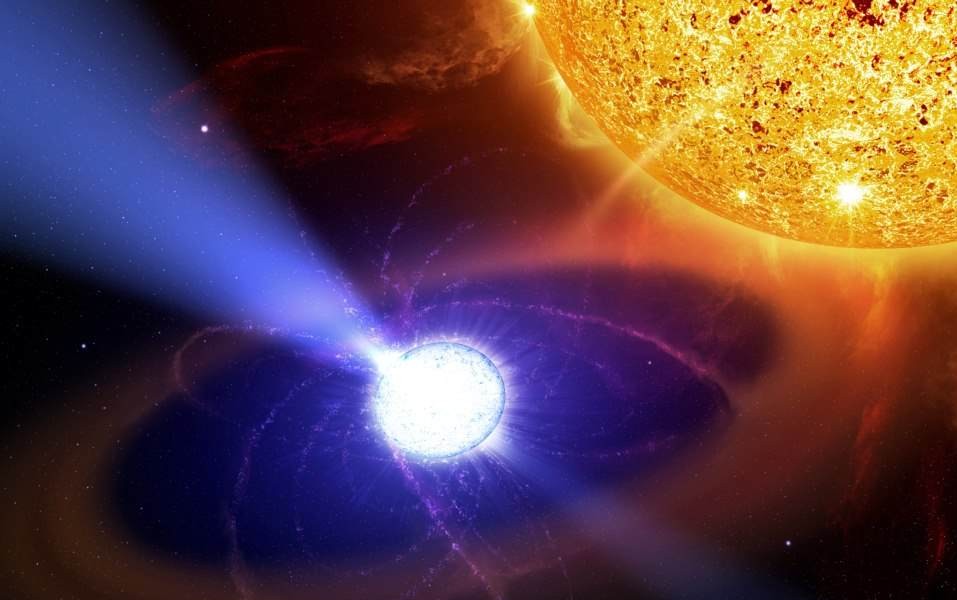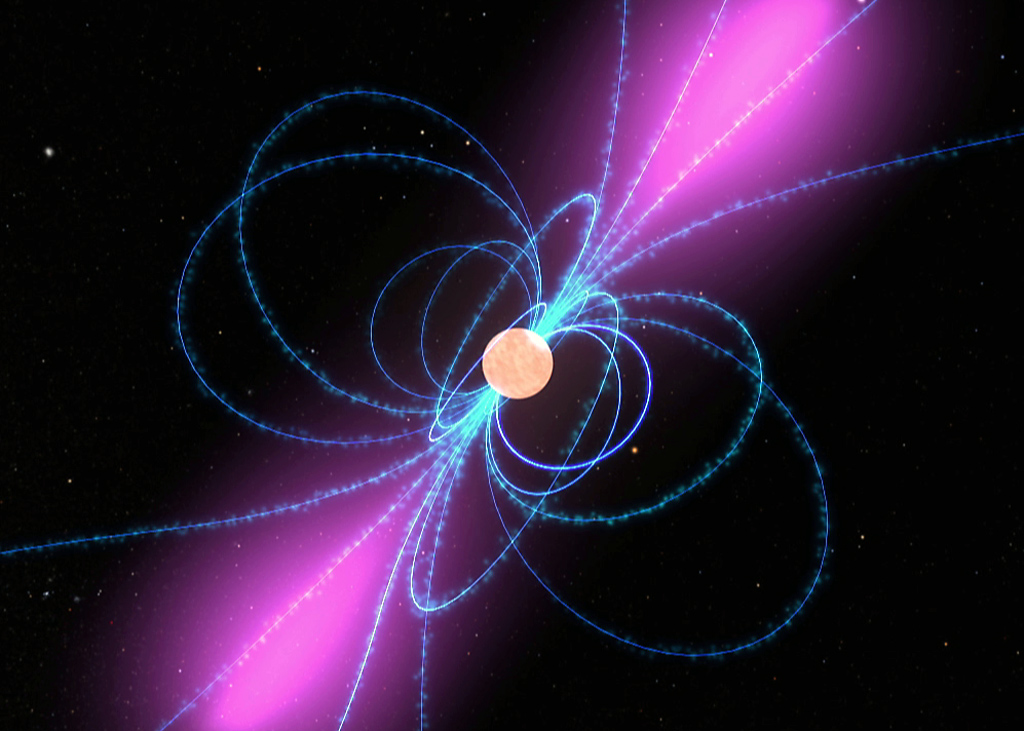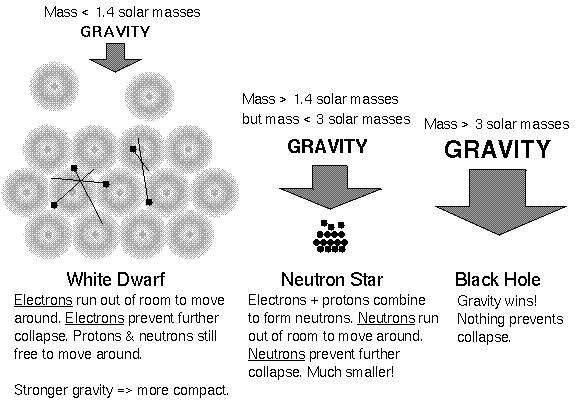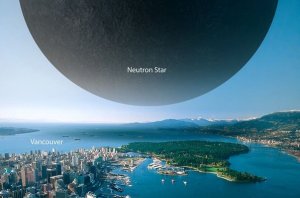

Today, the nature of certain cosmic phenomena (like stars are supernova blasts) is well understood by those who don’t specialize in physics. That’s because these phenomena are written about extensively; however, there are a number of wonders in our universe that, for one reason or another, don’t get discussed.
One such object is neutron stars. They can be regarded as the objects that “didn’t quite make it” to becoming a black hole. .
These stars are formed from the gravitational collapse following the death of a massive star. Neutron stars are the tiny – but incredibly dense – remnants that are left behind after such a collapse. As the name suggests, they are composed almost entirely of neutrons, which transform through a process we call “degeneracy.”
How Neutron Stars Form
Immediately after a star goes supernova, gravity begins to take individual atoms of matter together and compress them. This ignites a chain reaction, where individual electrons are effectively pushed into the protons, converting them into uncharged neutrons. The mechanism appears to break the exclusion principle (the brainchild of Wolfgang Pauli, the same Austrian physicist who hypothesised the existence of the neutrino) that states that electrons can’t be forced into a tighter space than their orbits.

During the star’s demise, the core – now composed of iron nuclei – collapses in about one tenth of a second. The gravity is so strong during the collapse that the electrons are converted into something else – neutrons – to fulfill the exclusion principle. This is what prevents the star from becoming a singularity (or a black hole).
As an aside, the key difference between the formation of a white dwarf (also a very dense remnant that is formed from the death of a sunlike star) and neutron stars is that the atoms do remain intact, but have been pulled incredibly close together.
But the neutron star’s formation has consequences; it produces a powerful blast of high-energy gamma radiation that can shatter all the nucleons. This, in essence, is the result of millions of years worth of fusion that happens in only a split second! The final product has a density equal to 100 trillion times that of water – yes you heard right: One hundred trillion.
Meet the Pulsar
So, how are neutron stars linked to pulsars? Well, they are two sides of the same coin. You see, neutron stars emit large quantities of light and radiation, and when they rotate, we ‘see’ these emissions as periodic flashes that occur with the exact same interval.
When they were first discovered, the predictability of the flashes made scientists question whether or not such a phenomenon could be produced naturally. This led to speculation that the origin of these strange pulsations was unnatural, or that they were some sort of an attempt at ‘first contact’ by an alien race from another part of the galaxy. But this was quickly shot down as we began to unravel the mystery surrounding their existence.
We soon learned that as a neutron star spins, the beams of electromagnetic waves reach us much like a lighthouse in the dark – producing the characteristic ‘pulses’ that define pulsars (and give them their name). When we can see said beams of light and radiation, we call the object producing it a pulsar. Yet, in many cases, we can’t see either. Thus, we classify the object in question as a neutron star.
In short: all pulsars are neutron stars, but not all neutron stars are pulsars (their categorization depends on our vantage point and the age of the object in question).

Remarkably, the most astounding characteristics of neutron stars are their size and rotational speed. They can be between 10 and 15 km (6 and 9 mi) in diameter (approximately the same size as Vancouver, BC—you can see a comparison on the right) and spin several times every second.
Furthermore, some are able to accrete more matter from a nearby source, resulting in the spin interval increasing by hundreds of times per second! Unfortunately, they do begin to slow down gradually, but it has been theorised that as they do, their surface shifts in a manner that results in them forming into a more perfect sphere. Thanks to the the conservation of angular momentum, this, in turn, causes the neutron star to speed up!
Since we’re on the subject, the conservation of angular momentum actually holds the answer to the rapid rotation of neutron stars (and pulsars alike). If you contract a spinning object (such as a star that is in the process of collapsing in on itself) it will actually begin to spin faster.
For example, when going into a pirouette, an ice skater pulls their arms closer to their body. This causes them to spin faster. Conversely, if they wanted to slow down their motion, they would extend their arms out from their body. We can deduce the manner by which stars rotate using this as an example. Namely, their origin. You see, they rotate because, at birth, they contracted from nebulae with a slightly preferred rotational direction. Our Sun completes one rotation every month – which isn’t really very fast – but if we shrank it down from its current size to about twenty miles across (keeping the same mass intact), its rate of spin would increase to 1,000 times every second. Pretty cool right?
The reason neutron stars don’t spin this fast is because their mass is merely a fraction of what it was originally. Regardless, they may not be quite as grand and mysterious as black holes, but the important difference for a physicist is that we can see and study them, when compared to the comparably dull, predictable (and very inconspicuous) black holes.